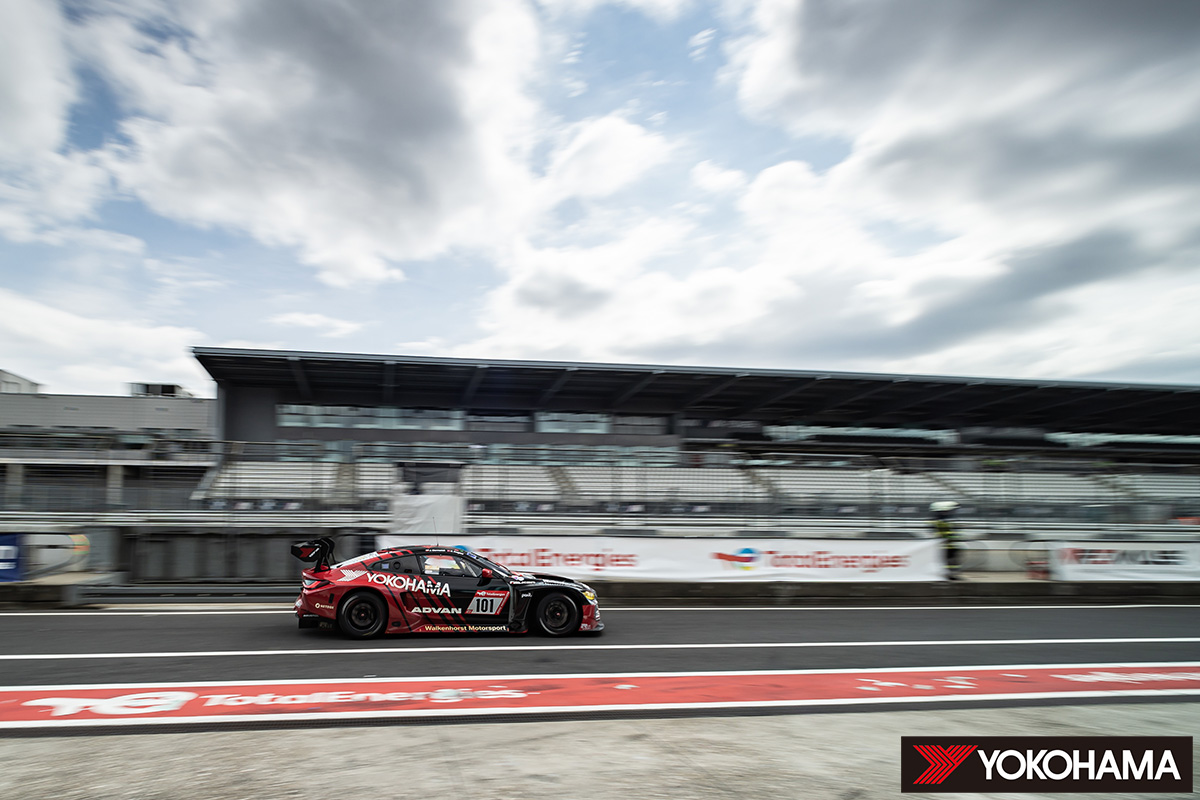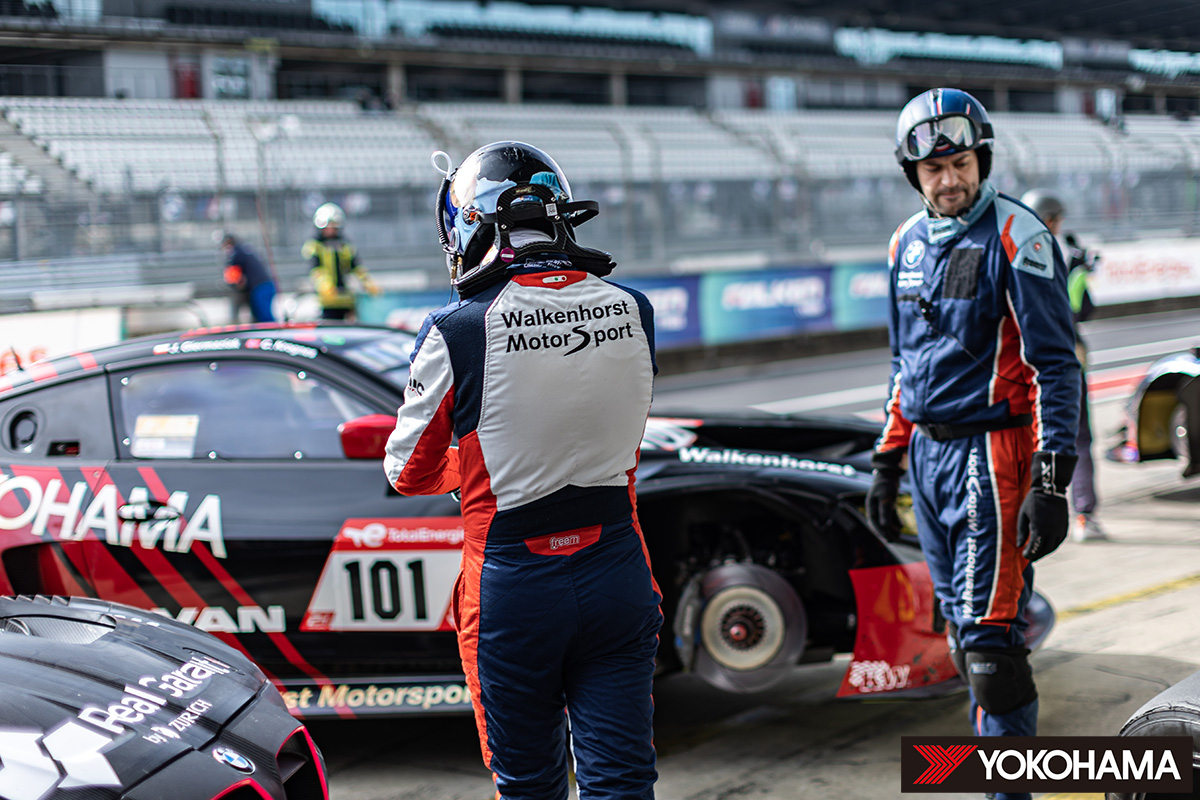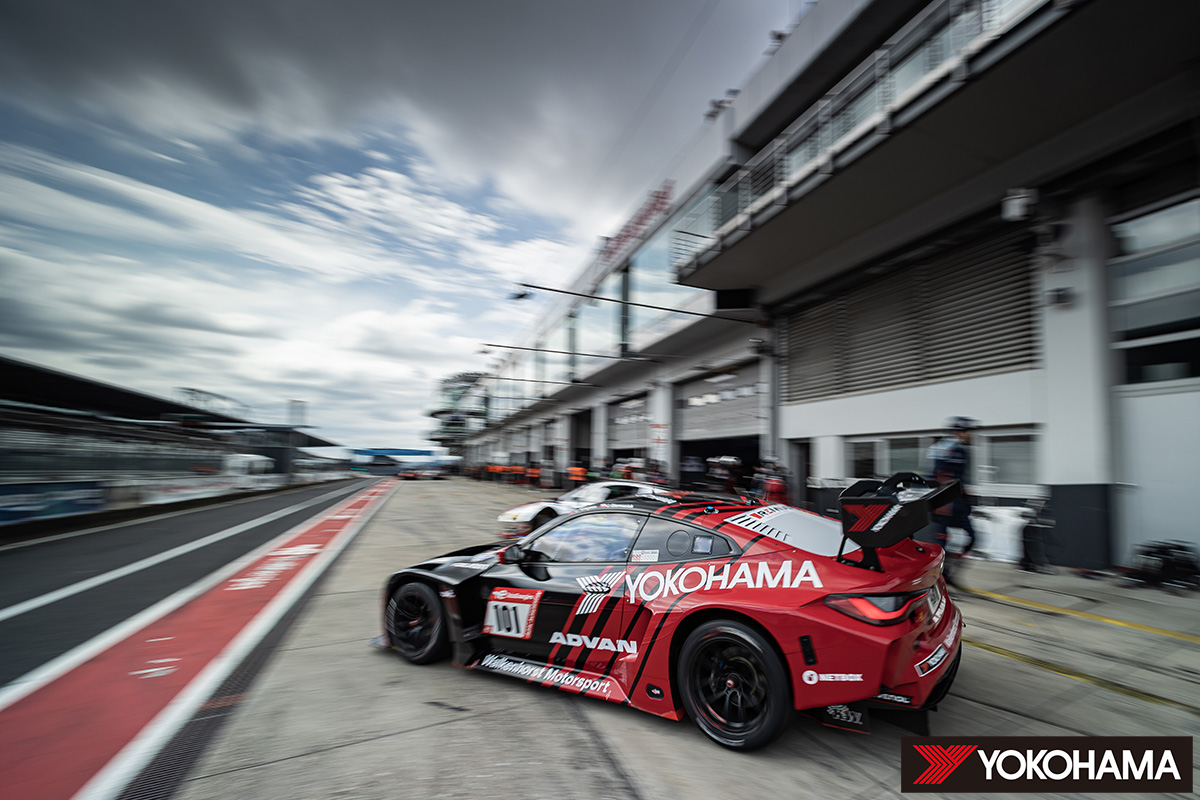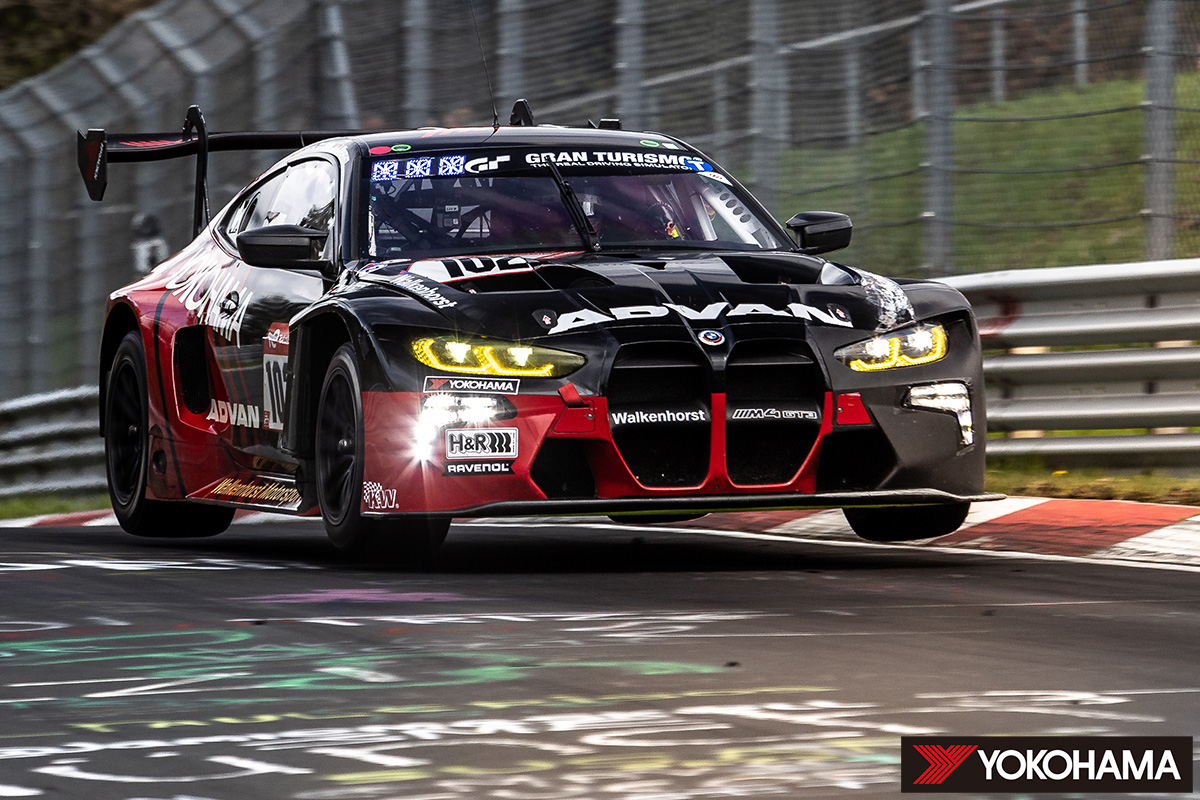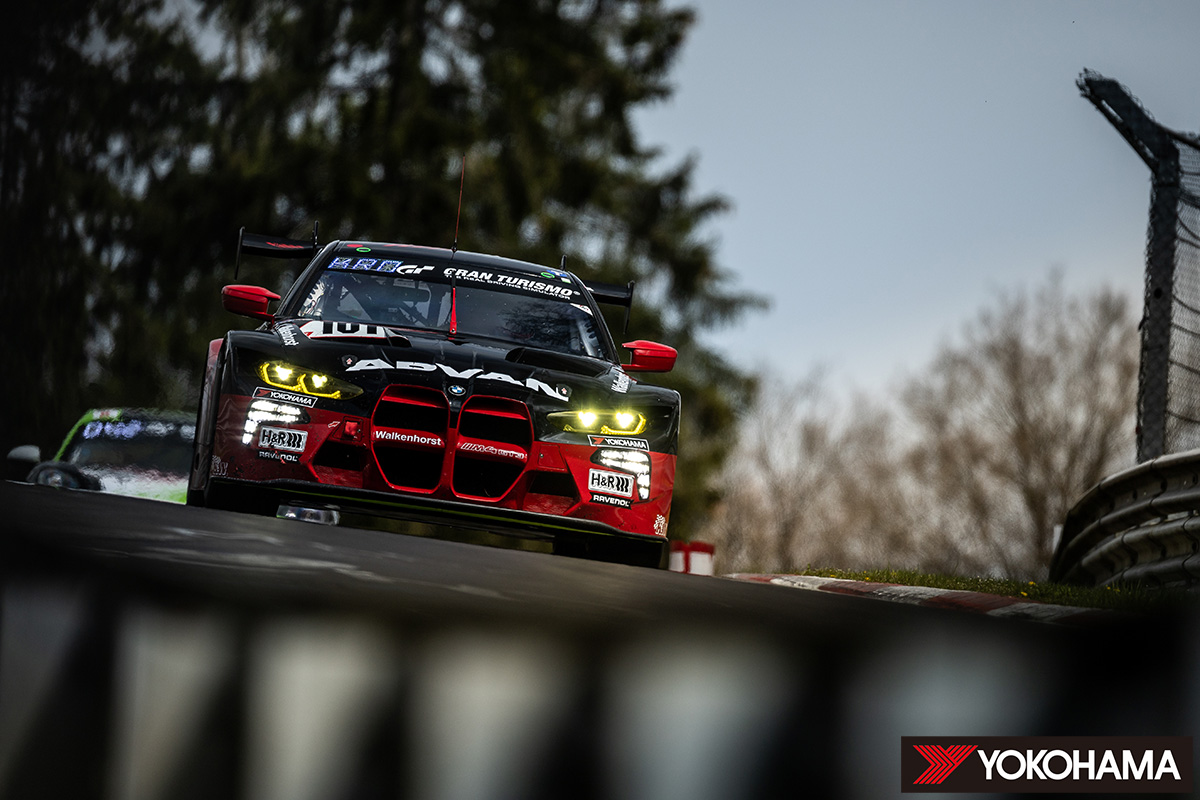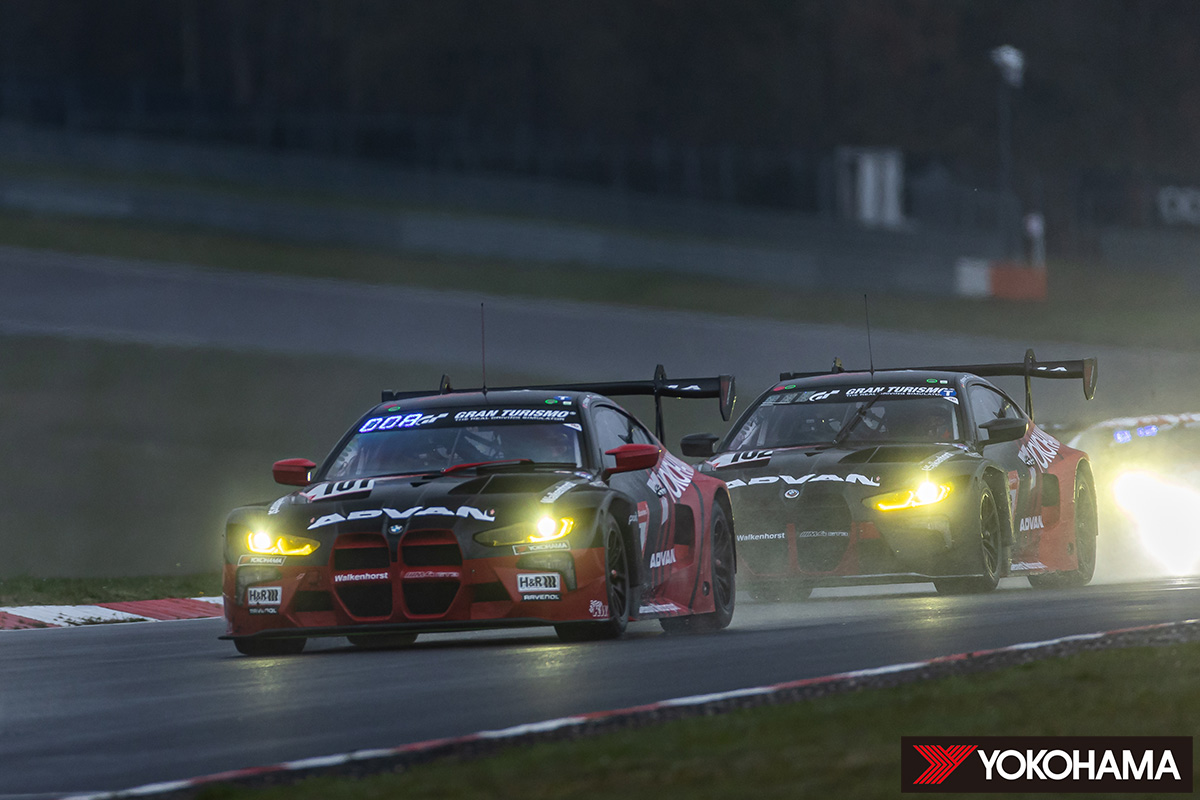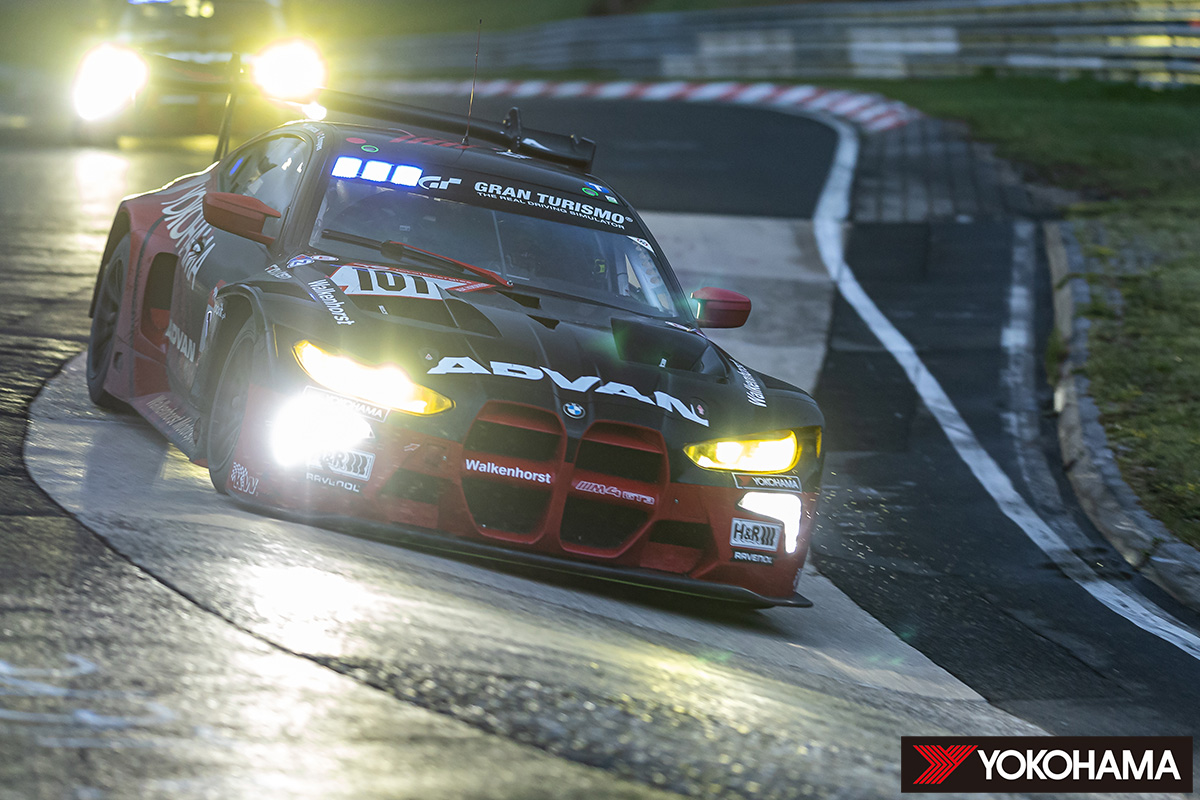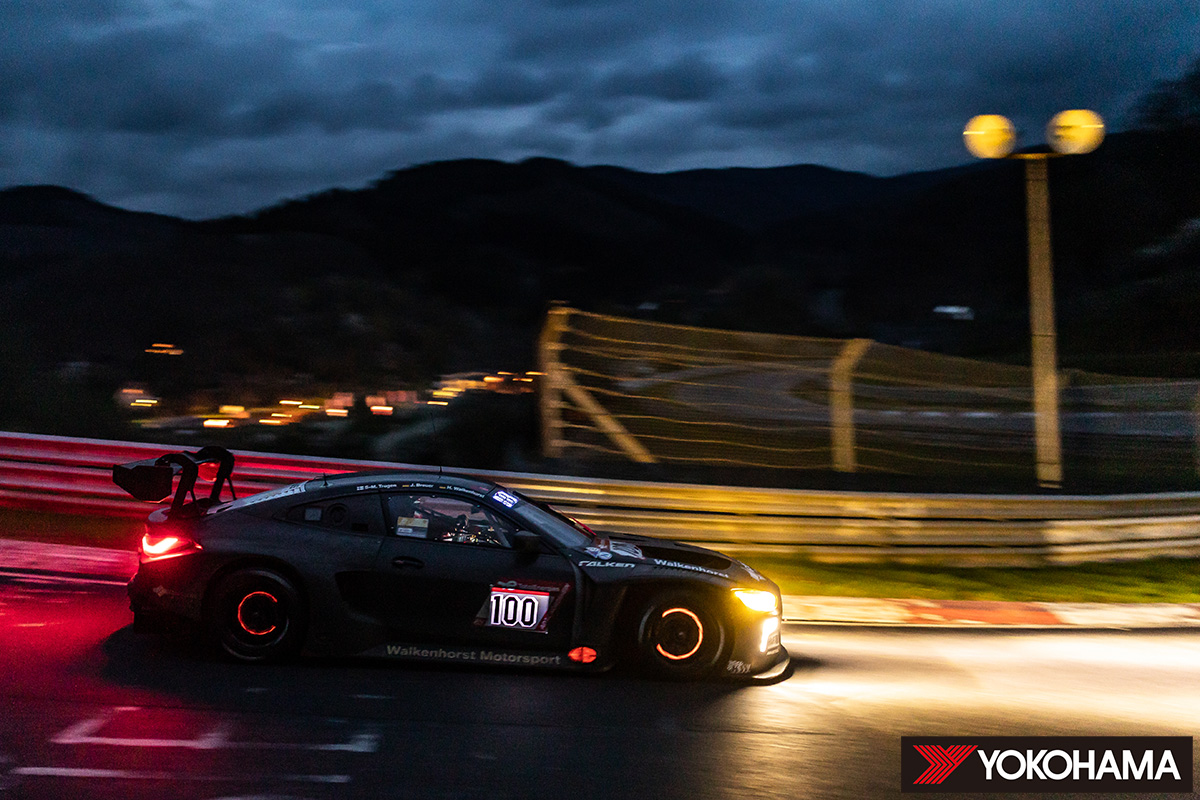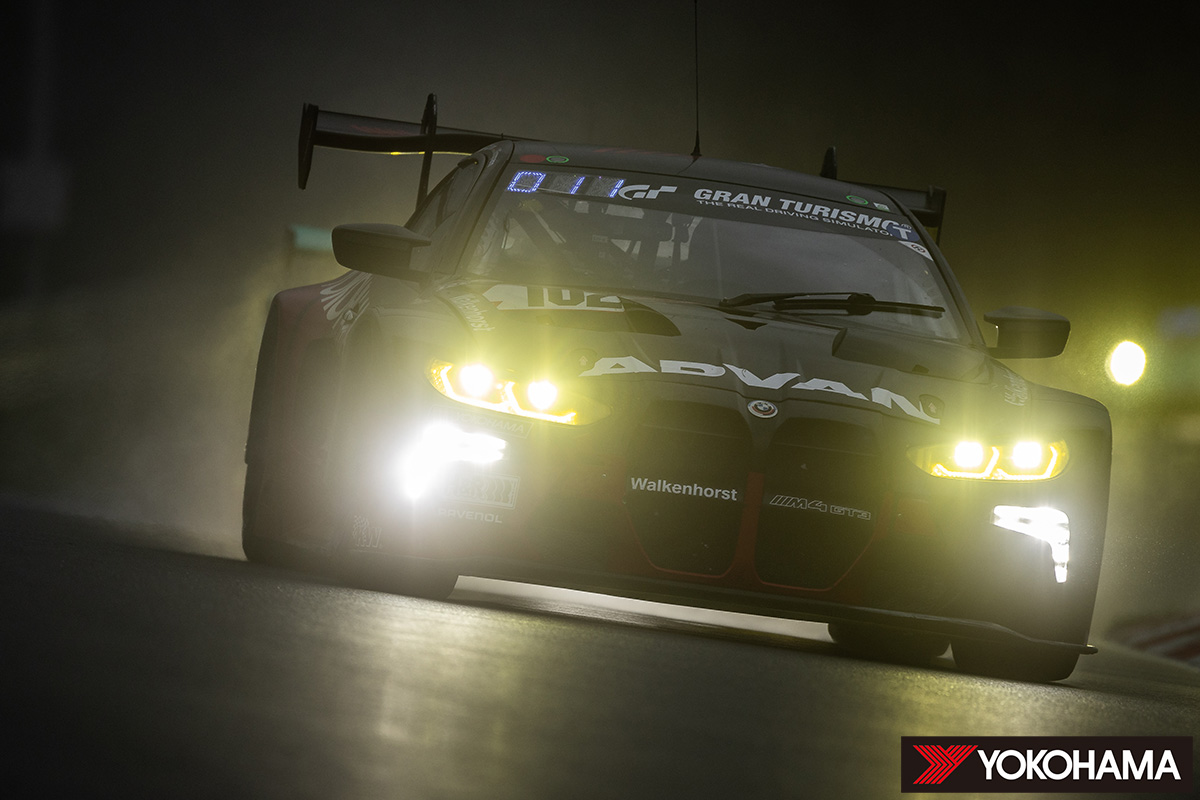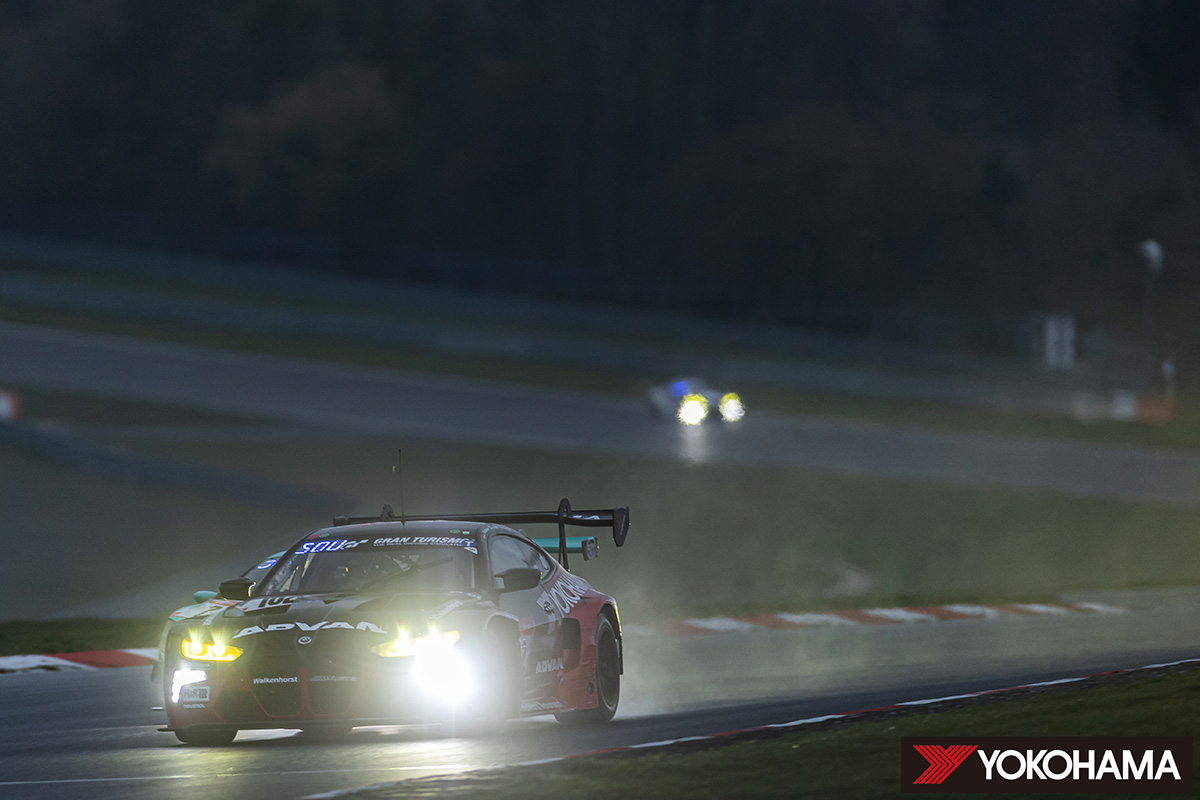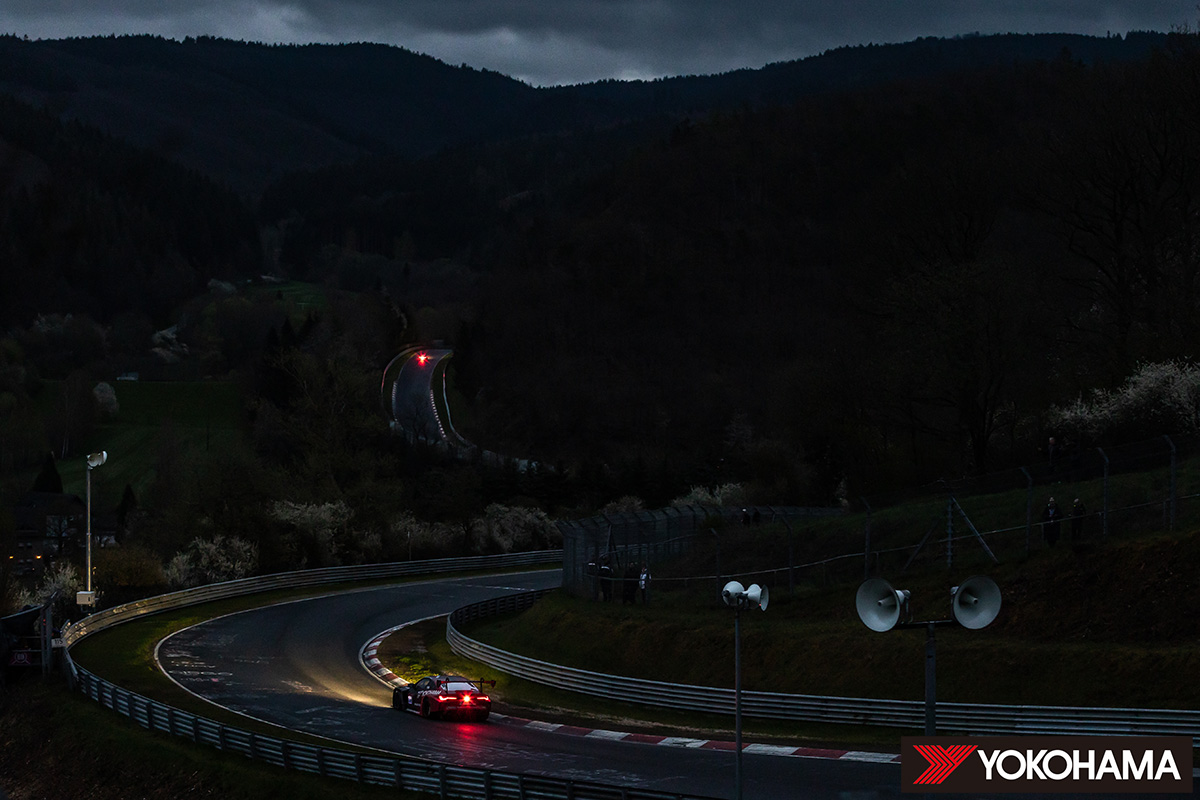- HOME
- Motorsports
- 2023
- 24H Nürburgring / NLS
- 24h Nürburgring Qualifiers Race1 Report
【24h Nürburgring Qualifiers Race1 / Nürburgring】
Two-Hour Twilight Race Hit By Cold Rain, Walkenhorst Cars Withdraw For Strategic Reasons
24h Nürburgring Qualifiers Race1
| Date | 22 April 2023 |
|---|---|
| Course | Nürburgring (Germany) |
| Weather | Cloudy |
| Surface | Dry |
| Race Time | 2Hours (1Lap=25,378m) |
The 2023 ADAC 24h Nürburgring Qualifiers were held on April 22nd and 23rd, Saturday and Sunday. The meeting was a prelude to the Nürburgring 24-hour race scheduled from May 18th to 21st, and it was a valuable opportunity to run the cars on this famous race track in preparation for the 24-hour race to be held about a month later. The qualifiers consisted of a two-hour race on Saturday, which included night-time racing, and a day-time 4-hour race on Sunday.
Walkenhorst Motorsport, in cooperation with Yokohama Tire, entered this event with two BMW M4 GT3s, which were given the traditional ADVAN-livery from the second round of NLS (Nürburgring Langstrecken-Serie) in the SP9 Pro class and another M4 GT3 in the SP9 Pro-Am class.
For the 2-hour race on Saturday, both of these cars were driven by two drivers. Christian Krognes made his first appearance of the season with Walkenhorst and shared the no.101 car in the SP9 Pro class with Jakub Giermaziak, the winner of the NLS’s second round. The no.102 car competed in the same class with the no.101 in the hands of Andi Soucek and Jens Klingmann. And the team owner, Henry Walkenhorst, drove the no.100 car in the SP9 Pro-Am class along with Sami-Matti Trogen.
Although it was already in the latter part of April on the calendar, it was chilly and cold during the race week at Nürburgring. Even a snowstorm was observed around the track, but fortunately, the snow didn’t remain on the ground for long. Nevertheless, the temperatures were still low on Saturday when the first race took place.
The 60-minute qualifying session began at half past noon. The sky was overcast, but the track was dry throughout the session. Having finished the free practice, which used the 4,638m-long Grand Prix course, in a close second, the no.101 car qualified in ninth with a time of 8’19″306. The time was set by Krognes in the closing stage of the session.
The no.102 car followed the sister car and ended the session in tenth. The car’s qualifying time was 8’20”043, which Klingmann marked around the halfway point of the session. The no.100 car was the second fastest in the SP9 Pro-Am class with the time of 8’21”715 set by Trogen.
There was a 6-hour interval from the end of the qualifying at half past one p.m. to the start of the race. And a longer break isn’t always a good thing to have, as the weather was getting worse during these six hours, and it started to rain. While it wasn’t so heavy, a small amount of rain continued and wetted the tarmac.
Therefore, the track conditions were now completely different from those in the qualifying, and the race control declared “Wet Race” as the teams were taking their cars to the grids. At seven o’clock p.m., a board saying “10 minutes before start” was shown. Everybody on the grids wore thick overcoats; some people used umbrellas, and others didn’t, which meant the rain was only sprinkling. But the track surfaces were wet, and all cars in the SP9 class opted for the wet tires for the start.
When the 2-hour race got underway, the air/track temperatures were at 12/14 degrees centigrade, according to Yokohama Tire’s thermometer. Although it wasn’t dark yet, the headlights were blinding because of the overcast sky. The no.101 car started the race with Giermaziak behind the wheel from the eighth grid since the car qualified in eighth but didn’t appear on the grid.
Having begun the race from the outside row to the right-handed Turn 1, Giermaziak moved up to fourth when the field was still on the Grand Prix course before going into the forest of Eifel. He was in a five-car pack fighting for second, and the no.101 car was fifth at the end of the opening lap. The side-by-side battle between them continued on Lap 2.
It was drizzling, but the conditions were getting tougher because it was becoming dark as time passed, and the water spray from the other cars impaired the drivers’ visibility. Given the difficult conditions, it was surprising that there were no major accidents on the track. However, the no.100 car also ran smoothly, and Walkenhorst could improve his personal best lap time again and again.
When one hour passed from the start, the shades of night had already fallen. At the end of Lap 6, both no.101 and no.102 cars came into the pit, and Giermaziak and Soucek handed their cars to Krognes and Klingmann, respectively. At the same time, the team gave a fresh set of slick tires to each car. Walkenhorst brought the no.100 car back to the pit on the next lap to change to Torgen, who was in charge of the second half of the race.
Krognes, behind the wheel of the no.101 car, bravely drove through the dark forest of Eifel and set the overall fastest lap of 9’12″452 on Lap 8. Then he substantially improved it by himself with the time of 8’52″557.
However, the evil entity at Nürburgring intervened then. With less than 30 minutes left, two Walkenhorst cars, the no.101 and no.102, came back to the pit at the end of Lap 10 one after the other. Unfortunately, the latter had a problem with its steering system, and the team put the car in the garage.
The former spun on the lap, and the driver wanted to check the car in the pit. Fortunately, it didn’t have any serious damage, but the team made a decision to retire both cars to preserve them for the second race on the next day and the 24-hour race after that.
On the other hand, Walkenhorst and Torgen drove the no.100 car steadily until the finish and saw the checkered flag.
